Senderuelas: meadow mushrooms and other mushroom names
2 years ago · Updated 6 months ago
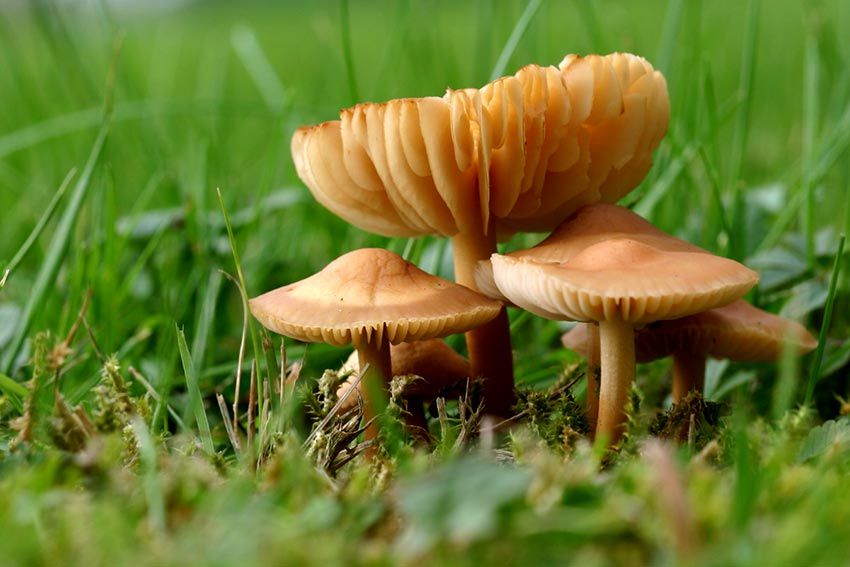
Camasecs, senderuelas, esas pequeñas pero aromáticas champignons comestibles que en temporada nos deleitan con sus hermosos trazos sobre la hierba de los prados. Vamos a contarles qué son las carrerillas o cama-secs, how to recognize senderuelas and also where to find them.
If you want to buy senderuelas for cooking, visit our online store.
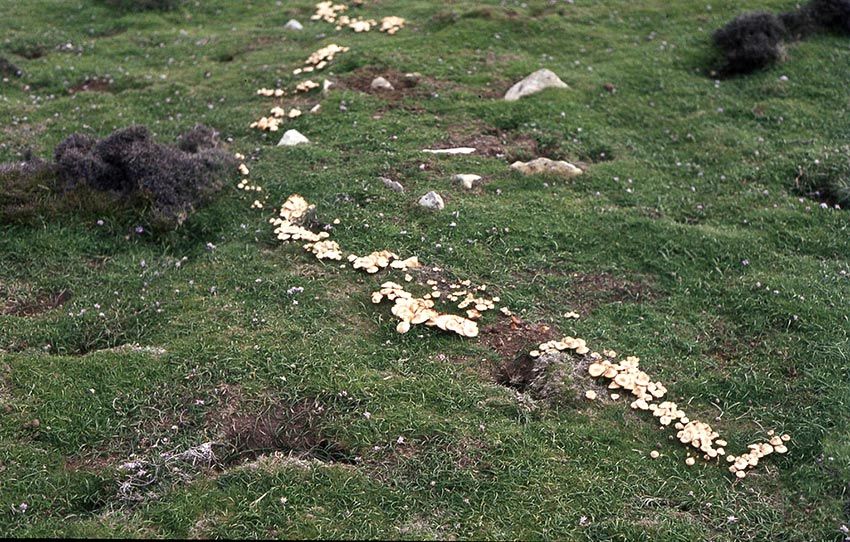
- What are mousserons?
- Cama secas, carreretas, senderillas... What are senderuelas called?
- What shape are fairy ring mushrooms?
- How to find morels in the forest?
- Poisonous senderuelas. Confusion of the senderuela with other mushrooms
- Poisonous senderuelas or false senderuelas
- Photographs of marasmus mushrooms
- Les mouillettes dans la cuisine
- Recipes with camasecs
What are mousserons?
The Marasmius oreades, camasec, is one of the most widely consumed wild mushrooms in our region. One reason is its delicious taste and ease of preservation. Another is its widespread distribution throughout the Iberian Peninsula and the islands. This is why it is also one of the mushrooms with the most variety of popular names
Popular names for the fairy ring mushroom
The camasecs, this famous edible mushroom probably has the greatest variety of popular names, although its scientific name is Marasmius oreades. It belongs to the class Basidiomycetes, order Tricholomatales, family Marasmiaceae.
The “family name” oreades comes from the name of ancient Greece. It was a circular dance performed by nymphs. A very appropriate name due to its delicacy, small size, and growth pattern forming fairy rings.
Cama secas, carreretas, senderillas... What are senderuelas called?
But it is not only called senderuela. Other popular names for this mushroom are: seta de aguja, seta de carrerilla, senderina, seta de corro, pucherete, gusarones, camasecs or cama-secs, carreretes, rojillas, cauchas, sendejuela, camaseca, ankaluze...
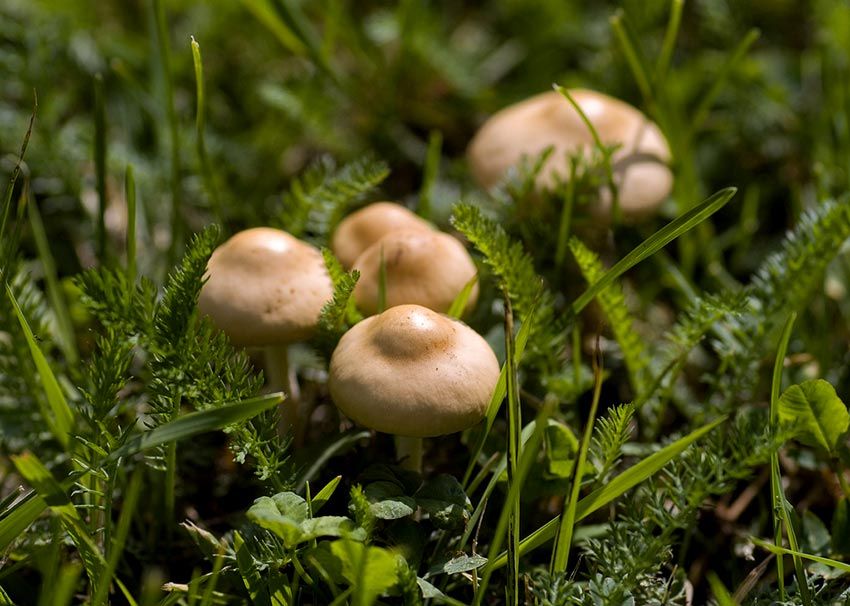
What shape are fairy ring mushrooms?
These small meadow mushrooms found along paths have very distinctive characteristics, making them a very easy species to identify. We will explain what fairy ring mushrooms look like part by part so that we can clear up any doubts we may have about identifying Marasmius oreades
Cap
The caps of false morels are small, between 2 and 6-7 cm in diameter. They are initially convex and conical in shape, then gradually flattening as they mature, accentuating a central bump. The cuticle cannot be separated and is light cream in color, like coffee with milk, or slightly reddish. Its edge is striated in adult specimens and in high humidity. The color lightens noticeably during periods of low rainfall
Gills
Sheep's foot mushrooms have creamy white gills, slightly lighter in color than the cap. They are spaced apart, thick, and separated from each other by lamellae or lamellulae.
Stem
The stem of the camasec or marasme des oréades is very distinctive. Especially its resistance to twisting. It is very difficult to break when bent. In addition, it is long and has a slightly bulbous base where mycelium and soil often stick during harvesting.
The Catalan name for the senderuela, camasec (dry foot), refers to this characteristic because, in order to eat it, it must be thrown away as it is too dry.
The color of the stem is the same as that of the cap. It is usually straight, except for specimens that grow in clusters, which is common during periods of heavy rain. In these cases, the stems are curved due to lack of space.
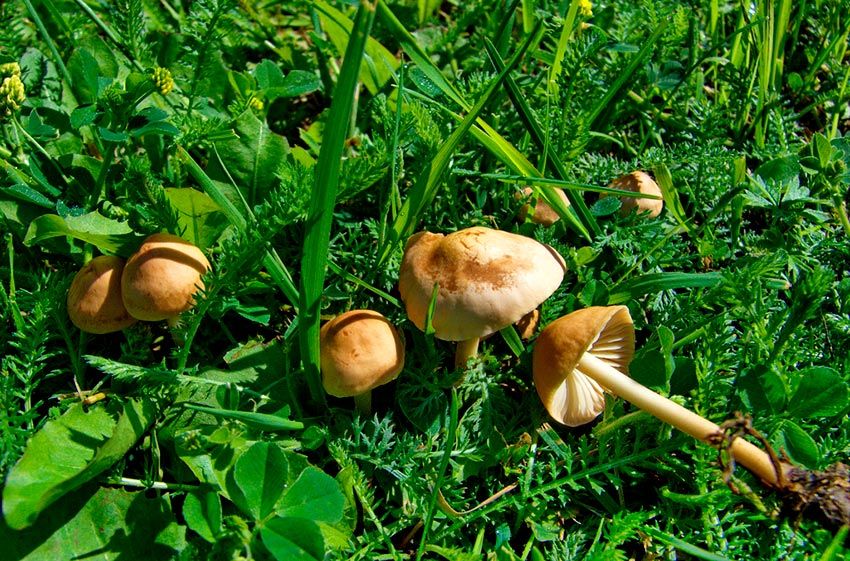
Flesh
Due to its small size, the flesh of Marasmius oreades is scarce. In addition, the stem must be discarded due to its hardness. We will need to pick a large number of mushrooms to compensate for this lack of quantity. On the other hand, it is a very aromatic mushroom, with a bitter almond smell, and is also very tasty and sought after in mushroom cuisine.
A characteristic of the marasmius is that it is not attacked by insects and does not rot, as it dries very easily.
How to find morels in the forest?
Going out to pick mushrooms and coming across a good group of clitocybes or morels is one of the greatest joys for mushroom hunters. And it's not surprising, because just one of these groups can fill your mushroom basket. It's a difficult task, but very rewarding!
To pick this type of mushroom, these mycological accessories will come in very handy:
Harvesting scissors, which will allow you to cut the thin stems of chanterelles without damaging their mycelium by pulling them out.
Gaiters to protect your clothes from the dampness of the meadows, especially early in the day.
Harvesting net, so you can carry them in your basket without them mixing with other species and arriving home in perfect condition.
Not only will we be able to eat fresh mushrooms when we get home, but we will also be able to preserve them to enjoy throughout the season.
But before preserving them, you have to find them, which is why we are going to explain all the secrets of mushrooms and how to find them.
Where do chanterelles grow?
Excellent question! The habitat of the Marasmius oreades is undoubtedly the first factor you need to know in order to find a circle of chanterelles.
Marasmius oreades grow in meadows and pastures fertilized by livestock, forest clearings, pastures, and gardens. They also grow along roadsides
You will quickly recognize the location of the circle by the burned area left by the mycelium as it develops or the change in color of the grass at the edge.
Why does this happen? This is due to the high amount of nitrates it releases during its development. In addition, the characteristic shape of the mycelium's growth means that these whimsical shapes are known as fairy rings, rings, or witch's circles.
When do honey mushrooms grow?
They appear in spring and autumn. They can continue to appear in summer if it is rainy and the temperature is moderate. After heavy rains, they will appear in abundance. And always in the same place!
That's why the exact locations of fairy rings or orange paths are a well-kept secret that, in rural areas, is passed down from father to son.
Look for corrosion spots in pastures
The popular name for this edible mushroom comes from the shape of the marks it leaves as it grows. These areas have a different color in the grass or with burnt or grassless patches. They are caused by substances released by the mycelium. As they are a different color, they are visible practically all year round. If we spot one, we can be sure that during the season we will be able to harvest some good senderuelas, if they haven't already been picked!
These shapes are not always circular, but can take on very capricious forms, although they always trace a winding line. These shapes are known as rilones, senderillos, carreretes or carrerillas
Poisonous senderuelas. Confusion of the senderuela with other mushrooms
With the characteristics of this small species in mind, it is not easy to confuse it with other species. However, we may accidentally harvest it along with other specimens and confuse it with false poisonous senderuelas. We will therefore review some characteristics that will help us identify it.
The amanita is difficult to confuse, although not impossible. Beware of poisonous amanitas
Due to its small size and habitat, it is not unusual for it to grow mixed with other small specimens that we will need to be able to identify. This is the case with some clitocybes or collibies. Also with other species of marasmius.
Poisonous senderuelas or false senderuelas
Marasmius collinus
This other Marasmius collinus is slightly toxic, with a somewhat purple tone and many more gills that are closer together than those of the senderuela. In addition, its fragile stem and garlic-like smell quickly differentiate it from its sister senderuela (which has a sturdy stem and a pleasant bitter almond smell).
Collybia dryophila
Less elastic and resistant stem with numerous, very tightly packed gills
Laccaria laccata
Different color and adherent gills
Collybia kuehnerania
Reddish-brown color
Tips for distinguishing marasmus mushrooms from other mushrooms
Pay attention to the cap, which in marasmus mushrooms has a very characteristic nipple and streaks that are recognizable in adult specimens. These two characteristics are not present in other specimens.
The arrangement of the lamellae in the mushroom, with plenty of space between them and separated from the stem, is also a very recognizable factor. Other species that share the habitat and appearance period have compact, tightly packed gills, which in some cases are decurrent, unlike those of M. oreades.
The aroma that emanates from a basket of morels a few minutes after leaving it in the car is incredible. In our opinion, it is much more pleasant than that of chanterelles. This bitter almond smell (reminiscent of amaretto, the Italian liqueur) is another of the best characteristics for determining whether we are dealing with morels or any other species of meadow mushroom, cypricolous, collibia, etc.
But the most obvious characteristic for determining whether we are dealing with a morel mushroom or not is the consistency of the stem. We can bend and twist it several times and it will not break. Very few species of mushrooms have this characteristic.
Photographs of marasmus mushrooms
These small but tasty mushrooms are also very photogenic. Alone, in clusters, or forming a huge fairy ring. We can find a wide variety of images of marasmus mushrooms, photos of carrerillas or of mushroom pickers crouching down and “at work.”
We leave you with some wonderful photographs of Marasmius oreades so you can enjoy their beauty
Les mouillettes dans la cuisine
The fairy ring mushroom is widely used in mushroom dishes. They require long cooking, between 7 and 10 minutes over high heat, but thanks to their flavor, they go very well with meat and fish, and of course risottos and omelets. In addition, due to their small size, they are very good in soups and broths. A true all-rounder in the kitchen.
Not only does it taste delicious but it is also easy to store, and with its abundant blooms after rain, we can stock our pantry with canned clitocybes for the whole year.
How to store morels
The lean flesh of the cap and the consistency of its stem make this mushroom one of the best species for dehydrating. To do this, you must remove any grass and soil that you may have picked up with them. It is advisable to use scissors for harvesting. This way, we will only cut the upper part and take much less leaves and debris into the basket.
Once cleaned of any plant debris, use scissors to cut the stems, leaving about 1 cm next to the cap. Then place them on a tray in your dryer or on one of the trays of an electric dehydrator.
Once dehydrated, you can store your mushrooms for up to 2 years if you keep them in an airtight container in the pantry.
Recipes with camasecs
Risotto with chanterelles
Ingredients:
- 300 g fresh chanterelles
- 250 g risotto rice (Arborio or Carnaroli)
- 1 small onion, finely chopped
- 2 cloves of garlic, chopped
- 700 ml vegetable stock
- 100 ml dry white wine
- 50 g grated Parmesan cheese
- 2 tablespoons butter
- Olive oil
- Salt and pepper to taste
- Fresh chopped parsley for garnish
Instructions:
- Clean the chanterelles and cut them into pieces. Set aside.
- In a large saucepan, heat a little olive oil and sauté the onion and garlic until tender.
- Add the chanterelles and cook for a few minutes until lightly browned.
- Add the rice and stir so that it is well coated with the oil and flavors.
- Pour in the white wine and let it evaporate.
- Add the vegetable stock little by little, stirring constantly and waiting until it is absorbed before adding more stock. Continue until the rice is al dente and has a creamy texture.
- Season with salt and pepper to taste.
- Serve the chanterelle risotto garnished with a little chopped fresh parsley.
Chanterelle omelet with tender ajetes
Ingredients:
- 250 g fresh chanterelle mushrooms
- 100 g spring onions, cleaned and chopped
- 4 eggs
- 1 clove garlic, chopped
- Olive oil
- Salt and pepper to taste
- Grated cheese (optional, for sprinkling)
Instructions:
- Clean the chanterelles and cut them into pieces. Set aside.
- In a large skillet, heat a little olive oil and sauté the chopped garlic until fragrant.
- Add the chanterelles and spring onions and cook until tender.
- Beat the eggs in a separate bowl and add salt and pepper to taste.
- Pour the beaten eggs over the chanterelles and stir gently until cooked and slightly scrambled.
- Optionally, sprinkle a little grated cheese over the top before serving.
Cream of chanterelle mushrooms
Ingredients:
- 500 g fresh chanterelle mushrooms
- 1 onion, chopped
- 2 medium potatoes, peeled and chopped
- 1 liter chicken or vegetable stock
- 200 ml heavy cream
- Olive oil
- Salt and pepper, to taste
- Fresh chopped chives for garnish
Instructions:
- Clean the chanterelles and cut them into pieces. Set aside.
- In a large saucepan, heat a little olive oil and sauté the onion until translucent.
- Add the chanterelles and potatoes and sauté for a few minutes.
- Pour in the chicken or vegetable stock and bring to a boil. Then reduce the heat and simmer until the potatoes are tender.
- Blend the mixture with a hand blender until smooth.
- Add the cream and mix well. Heat the cream without boiling.
- Add salt and pepper to taste.
- Serve the chanterelle cream garnished with chopped fresh chives.
I hope you enjoy these delicious chanterelle recipes! Bon appétit!
We hope that with these tips and advice you will be able to pick and enjoy these delicacies the next time you see them. Don't forget to leave us your photos on our Facebook page when you harvest them 🙂
Cheers and mushrooms!

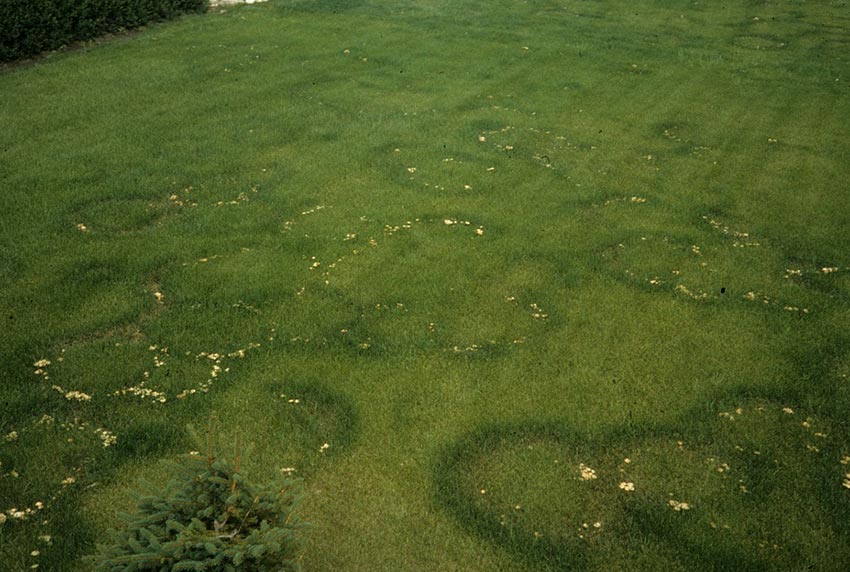

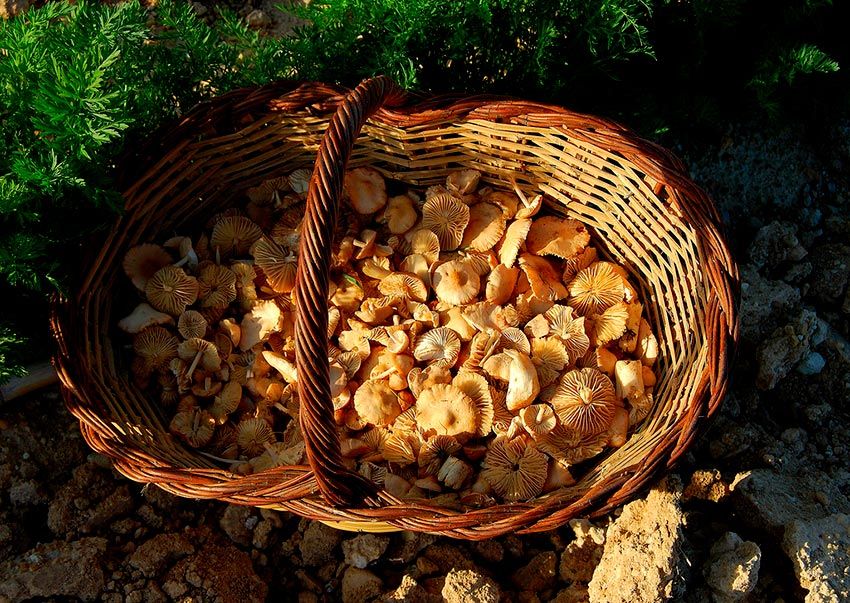
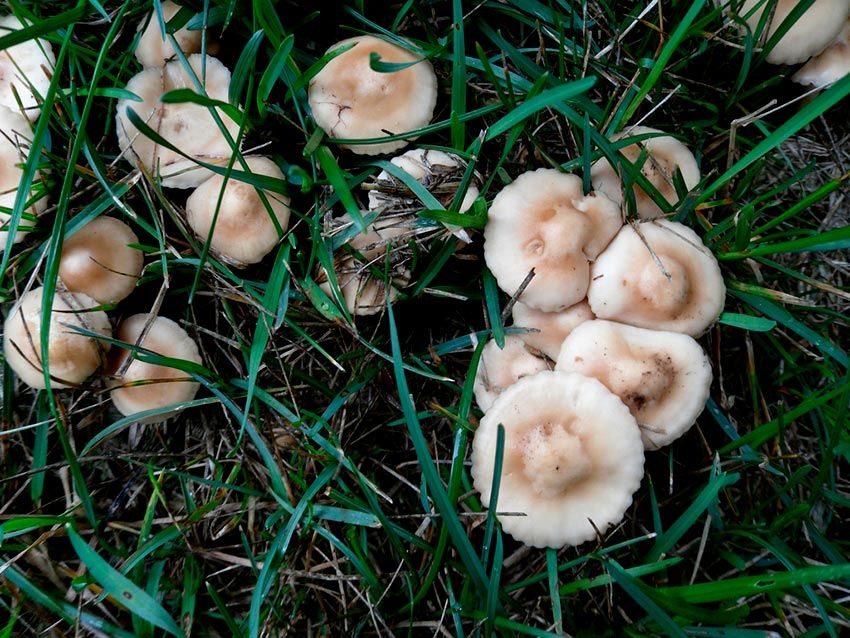

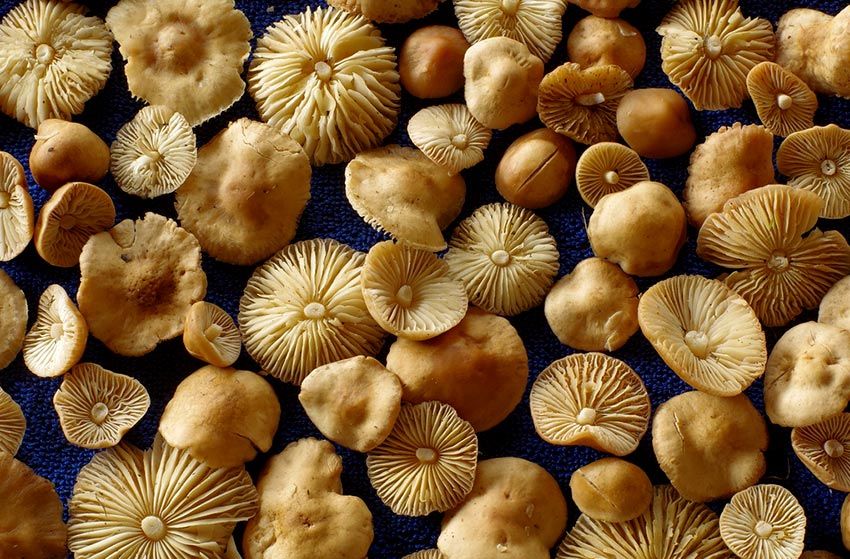
Te pueden interesar